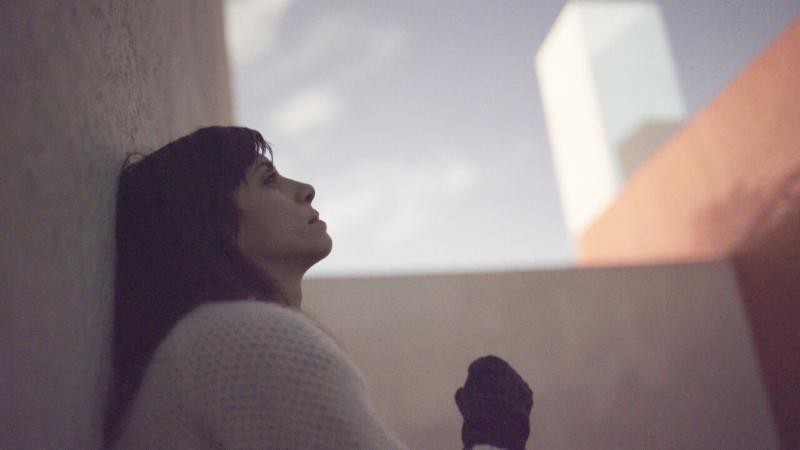Jill Magid is an artist, writer, and filmmaker whose work includes performance art and large and small-scale installations. She has been commissioned to make work for the Whitney Museum of American Art and has had solo exhibitions at the Tate Modern, Mexico City’s Museo Universitario Arte Contemporáneo, and other museums and galleries around the world. “The Proposal” is her feature-length filmmaking debut.
“The Proposal” will open May 24 in NY and May 31 in LA.
W&H: Describe the film for us in your own words.
JM: Part thriller, part romance, “The Proposal” follows the making of a radical artwork to explore the contested legacy of the late Luis Barragán, Mexico’s most famous architect.
W&H: What drew you to this story?
JM: I was immediately drawn to Luis Barragán’s work, and, quite quickly afterwards, the difficulty in accessing it. In my work as a visual artist and writer, I search for new perspectives on long-established power structures.
The story of Barragán’s archives, split between Mexico and Switzerland, and how his archive was allegedly acquired as an engagement present, felt to me a beautiful and important story to investigate.
W&H: What do you want people to think about when they are leaving the theater?
JM: I want them to think about how we as a society might participate in artistic legacy, and to reconsider the legal obstacles which prevent or limit that participation. I would also like people to feel Barragán’s legacy, as a sensorial, embodied experience. And perhaps too, how art can be a methodology through which challenging questions are posed.
W&H: What was the biggest challenge in making the film?
JM: As a conceptual artist and first-time filmmaker, the biggest challenge was to how to tell the story through the medium of film. I’ve been making artworks, performances, and international exhibitions about Barragán’s work since 2013.
The unlimited time a viewer has to experience an artwork or exhibition is very different than that of an 83-minute film. During the editing process, I came to really enjoy the ability to lead the viewer along the timeline.
W&H: How did you get your film funded? Share some insights into how you got the film made.
JM: I was fortunate that this story is one that director Laura Poitras, the film’s executive producer, felt needed to be told. She commissioned me to make a short documentary about it, which grew to feature-length.
Other funds were supplied by the retailer Aesop, whose owner, after reading The New Yorker article on my artwork, contacted me hoping to support it. Further finishing funds were generously supplied by individuals who believe in the project.
W&H: What’s the best and worst advice you’ve received?
JM: Best advice: A middle school social studies teacher advised us to always sign questionnaires, even if they could be filled in anonymously. He said, “If you have an opinion, stand by it.” I think this goes the same for posing questions, which the film and my artwork does.
The worst advice: “Don’t have children, especially not more than one, if you are going to call yourself an artist.” Yes, that was said to me. Multiple times. Very thankfully, I did not listen.
W&H: What advice do you have for other female directors?
JM: Gather a strong, supportive team around you, with people you respect and who have skills that you do not. I was very fortunate to have Laura Poitras, soon joined by Charlotte Cook, supportive of me and my story, and that it could become a film. Laura also set me up with an incredible cinematographer, Jarred Alterman.
Laura Coxson came on as a wonderfully committed producer. And I found my editor, the excellent Hannah Buck — without her focus and sensitivity, and our very long, cold days in the studio which had a broken heater, this film would not exist.
And of course, be sensitive to your loved ones at home, who are probably sick of hearing you talk and fret about your film.
W&H: Name your favorite woman-directed film and why.
JM: “Morvern Callar” by Lynne Ramsay, which I saw alone at the Film Forum in 1995, with no clue of what to expect. I was struck by its darkness, and how the violent act of the protagonist, early in the film, was so strangely permeated with love.
I also think about Sarah Polley’s “Stories We Tell.” That film made me feel like I could also make one.
W&H: Hollywood and the global film industry are in the midst of undergoing a major transformation. Many women — and some men — in the industry are speaking publicly about their experiences being assaulted and harassed. What are your thoughts on the #TimesUp movement and the push for equality in the film business?
JM: The same thing is of course occurring in the art world. Like the film industry, museums and galleries should also be mindful of giving equal opportunities to both men and women, and to closing the economic gap between them. I also hope there will be greater sensitivity to the needs of families, such as help with childcare.







